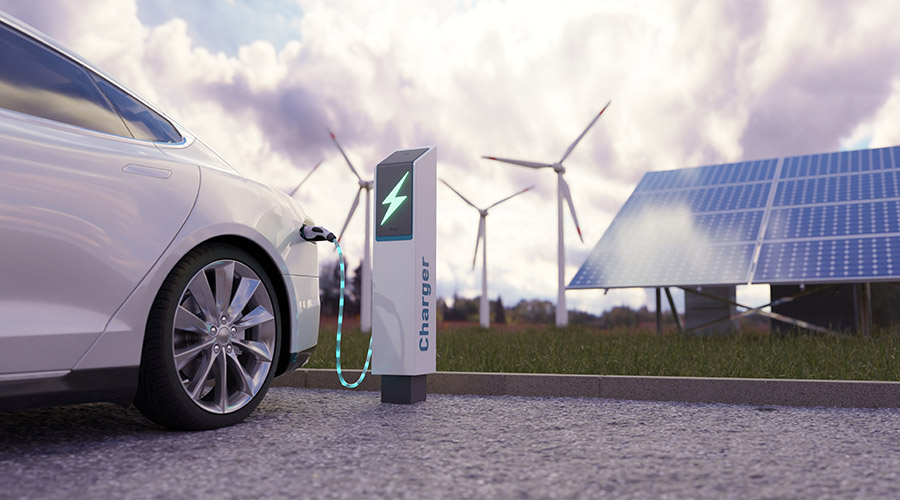As healthcare facilities look to modernize their infrastructure and meet sustainability goals, the installation of electric vehicle (EV) charging stations is becoming an increasingly relevant discussion. However, while the environmental and convenience benefits are there, the financial concerns remain a key factor—especially when making the case to the C-suite.
In this manufacturer roundtable, Healthcare Facilities Today has brought together EV charging manufacturers to break down the real numbers behind return-on-investment (ROI), discuss financial incentives and share insights into how healthcare facilities can approach electrification in a way that makes both business and environmental sense.
What is the typical ROI for EV chargers? How effective is ROI when it comes to convincing the C-suite to install EV chargers?
“Healthcare parking facilities cater to three primary groups: staff, patients and EMS fleets, all of which can benefit from having EV chargers available. For staff, having access to EV charging can be an attractive benefit that may aid in recruiting and retaining employees. For patients, EV chargers enhance the overall experience, which can be a factor in their decision to choose a healthcare provider.
This is particularly relevant for patients traveling from rural areas, as longer distances often require a charge upon arrival. Providing charging stations helps alleviate concerns for those driving EVs when seeking medical care. Additionally, for facilities with an EMS fleet, transitioning to electric vehicles can lead to substantial cost savings. In one JD Power analysis, an EV fleet of 100 medium-duty cargo vans could save 60 percent, or $21.8 million in ten years!”
— Jenifer Yokley, chief marketing officer, Blink Charging
“As the EV revolution gains momentum, the push to install EV charging stations is becoming a hot topic for facility managers. Beyond the green headlines, the real question that many healthcare decision-makers are asking is, “What’s the ROI for EV chargers?”
Understanding the typical ROI for EV charging stations isn’t a simple calculation. It’s influenced by a variety of factors:
- Traffic and Accessibility: A station located in a high-traffic area with easy access and good visibility will naturally generate more usage, leading to faster revenue growth.
- Charger Type and Speed: Faster, high-powered chargers often come at a premium, but they also attract more users who are willing to pay for convenience and speed unless of course the property chooses to only accommodate the hospital staff and outpatients or visitors in that case highspeed charging, and the cost associated are lower barrier to enter.
- Competitive Pricing: Pricing that’s in line with—or slightly better than—local competitors can encourage repeat usage, while too high a price might deter drivers.
- Permits and Installation Costs: The expenses related to engineering, permits, location prep and staging and extending electrical service to the site significantly impact the upfront investment.
- Incentives and Rebates: State, federal and utility rebates—as well as tax credits—can dramatically shorten the payback period, making the installation more financially viable.
- Revenue Sharing Agreements: For many businesses, partnering with a charging provider often involves a revenue split. This arrangement can be a win-win, but it also means that ROI depends not only on usage but also on the negotiated terms.
Once these variables are accounted for, the net profits typically need to cover additional ongoing costs such as:
- Software support and credit card processing fees.
- The cost of electricity to power the units.
- Insurance, warranty, and maintenance.
- Equipment depreciation over time.
If a charging unit is used for about six hours a day, on average, industry figures suggest it could take roughly 33 to 36 months to recoup the invested capital for equipment and infrastructure.
- Sustainability and ESG Initiatives: Installing EV chargers demonstrates a commitment to green initiatives, which can enhance brand reputation and appeal to eco-conscious consumers.
- Long-Term Revenue Growth: Once the upfront costs are recouped, ongoing revenue can become a steady stream, especially as EV adoption grows.
By illustrating how EV charging stations fit into a broader strategy of sustainable growth and customer satisfaction, the ROI story becomes more compelling. While the exact timeline to profitability varies, the long-term benefits—financial, environmental and reputational—can make a strong case for action and an understanding of the trajectory of e-mobility.”
— Eli Braha, executive vice president, EVectriFi Technologies Inc.
Jeff Wardon, Jr., is the assistant editor of the facilities market.

 Designing Healthcare Facilities for Pediatric and Geriatric Populations
Designing Healthcare Facilities for Pediatric and Geriatric Populations Kaiser Permanente Announces New Hospital Tower at Sunnyside Medical Center
Kaiser Permanente Announces New Hospital Tower at Sunnyside Medical Center Building Disaster Resilience Through Collaboration
Building Disaster Resilience Through Collaboration Amae Health Expands to New York City
Amae Health Expands to New York City Hospital for Special Surgery Opens Two New Facilities in New Jersey
Hospital for Special Surgery Opens Two New Facilities in New Jersey